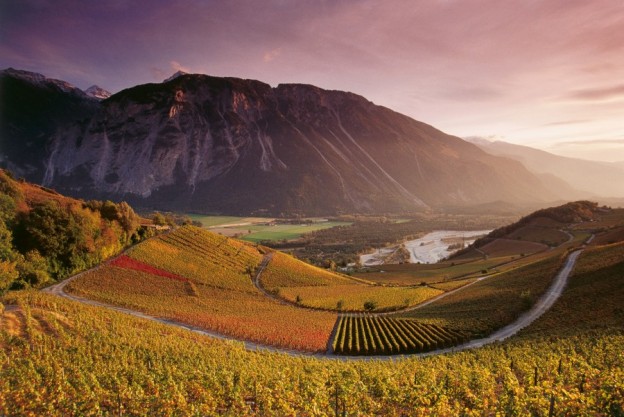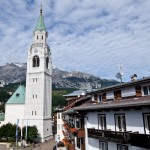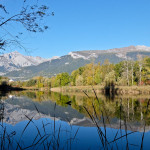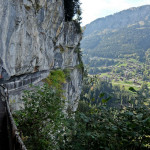Ordinarily, it would take over 24 hours to heat this oven, so I was pretty fortunate it was good and ready by the time I got there. I was here to work, and work I did. After all, you can’t make proper mountain rye bread in Erschmatt without breaking a proper sweat.
Switzerland’s attraction in winter and summer needs no introduction, but during autumn, from October to mid November, it’s a pretty special place to be too. The sun might still have its summer hat on but the gold hue covering the slopes and meadows comes from the rusting leaves as Mother Nature readies for winter. Nowhere is this more vibrant than in the Valais, which competes with Graubünden as Switzerland’s most mountainous canton and carries two languages divided by the Rhone valley. To the east is German and the west, French.
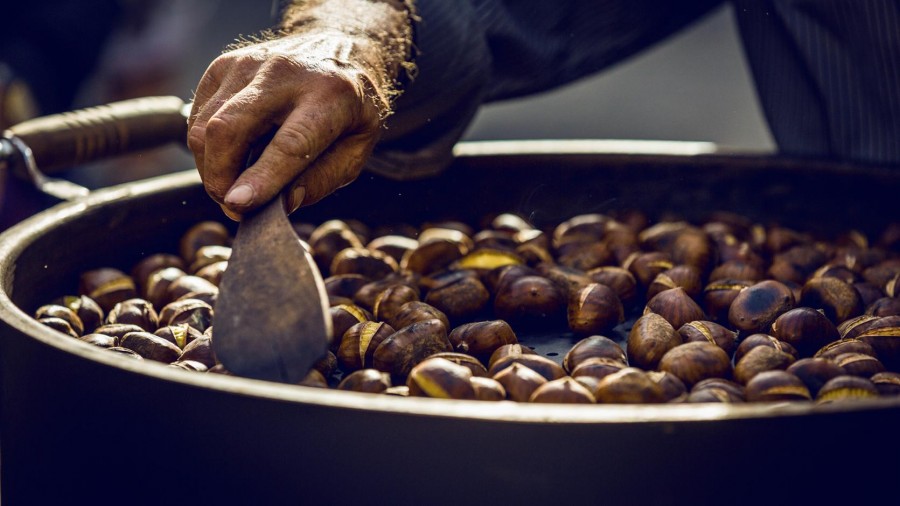
From the saffron fields of Mund to the chestnut roasters in Fully, autumn is the time for harvesting; whether it’s the delicate saffron petals that peek out for just a day a year or the “bread of the poor” (as the locals call their chestnuts) from the forest floor.
I started my autumnal adventure up in Belalp with a glacier from the dawn of time as a close neighbour. Just a 15-minute cable car ride up from German-speaking Blatten I emerged to find two things; staggering mountain scenery and deafening silence, save the occasional bleat from grazing goats and the scrape of a boot from a passing hiker. “Hotel Belalp?” I enquired from the hiker who pointed back along the path he’d just walked. “Right at the end. You can’t miss it. If you do, you’ll fall off.
I laughed.
“I’m not joking.”
And he wasn’t.


No more than 15 minutes later I stood outside Hotel Belalp perched right on the edge of the mountain adjacent to a real-life glacier. In fact, the restaurant was a glass box that extended out into thin air. Later, at dinner, over a glass of excellent local wine and a bowl of chestnut soup followed by wild boar and mushroom tagliatelle, I sat and watched the sunset unfurl, mentally held hands with my glacier and almost wept.
A new day dawned crisp, sunny and golden and I walked back to the cable car with nothing but birdsong as company. Perhaps I was caught up in the moment, but let’s face it; up there I was perhaps a lot closer to heaven.
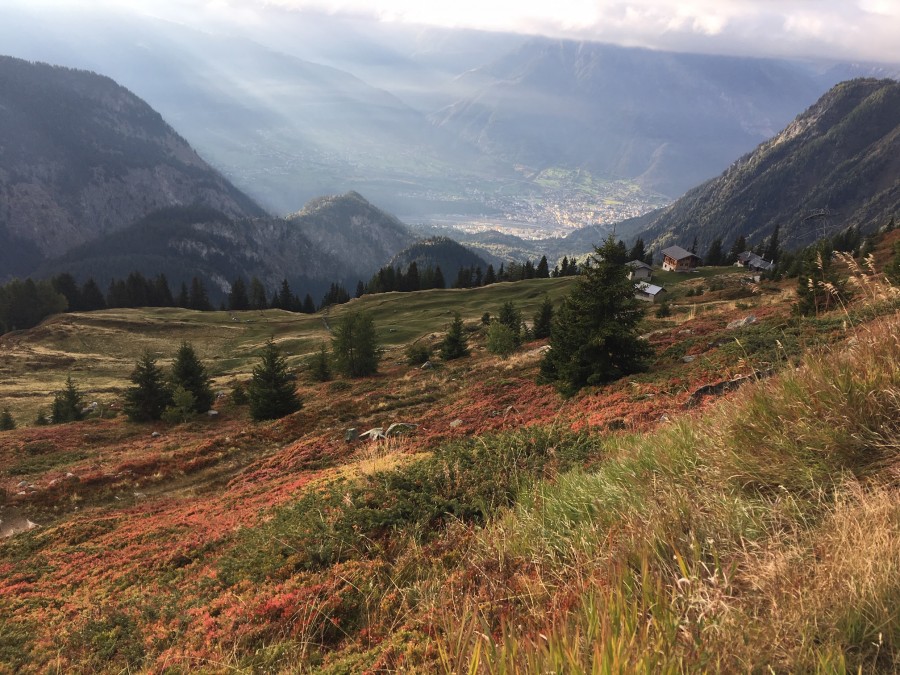
Back down on earth, I made my way by train and bus over to Erschmatt to join the villagers making some of their legendary rye bread. I passed by the saffron fields of Mund where 120 of the delicate petals makes just 1 gram of the spice. The villagers here traditionally toil for ten days each year harvesting enough saffron to dry and grind into products to sell; everything from saffron-infused pasta and bread to tiny vials of the pure dried spice.
The wonderful people of Erschmatt have proudly kept up the tradition of bread-making dating back centuries despite a decline in interest from neighbouring settlements. This enchanting mountain-top village still grows rye wheat on ancient terraces high up above Leuk and grinds the flour in equally ancient mills. The Valasian rye bread that emanates from all this toil is so hardy it lasts for months, a much-needed source of food during the cold winter. Marianne and Edmund Steiner together with colleagues from their community all pull together to make this delicious bread and I wanted to find out their secret.

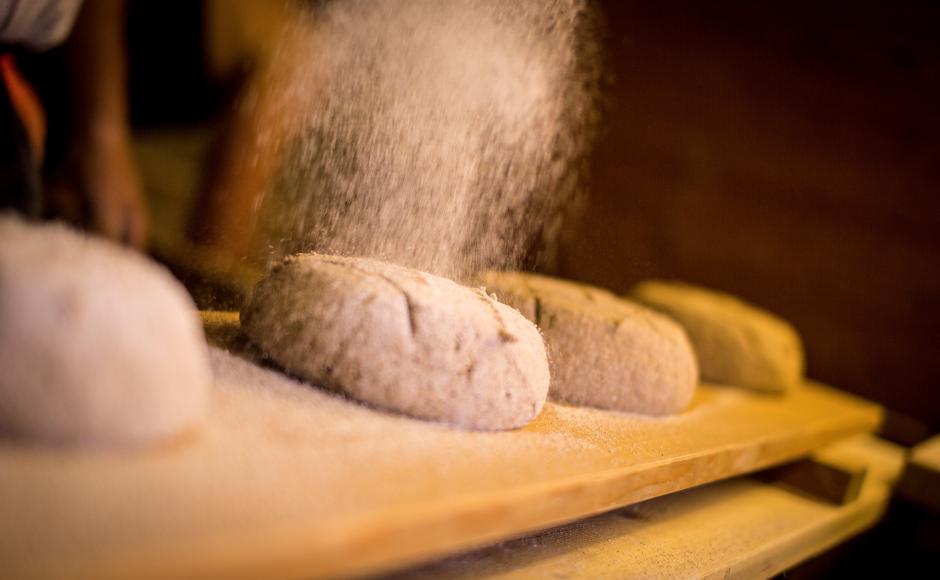
Marianne threw an apron at me and pointed to a door. “In there,” she said “quickly.” This rustic room had been slowly heating for hours courtesy of an ancient wood-fired oven keeping the precious yeast malleable enough to mix with the flour. Armed with just a giant wooden paddle I was put to work kneading dough inside what could only be described as a wooden coffin. Enough of it, it seemed, to feed an army. Taking pity on me, Marianne brought me some local help and under her experienced eye had us all rolling, kneading and shaping until the precious balls were ready to be baked.
While the bread baked, we passed the next two hours having a communal dinner of fresh local goodies; mountain cheeses, dried hams and a few glasses of some more local wine. Baker David interrupted our feast with breaking news; the bread was baked. I could see why this rye was so hardy. Dense, nutty and delicious, it was a sourdough rye with attitude. While I searched for my two heavy round loaves (I had scrawled my initials on them) my only worry was how much this was going to cost me in exceeding airline baggage weight.

That night I slept in the charming Castel de Daval near French-speaking Sierre, surrounded by its own vineyards lorded over by the lovely Madame Monique Caloz – Evéquoz. It came as no surprise to learn that all check-ins included a free wine tasting session. That night, I dreamed of rye bread saffron sandwiches and Daval red wine.
Sierre has treasures of its own; none more remarkable than at the picturesque village of Grimentz where centuries-old glacier wine is found. This legendary wine is secreted away within the cellars of the Bourgeoisie, an ancient guild of village elders. I was granted an audience to visit the cellar of the Grimentz Maison Bourgeoisiale to give it a try. Ancestral tradition calls for the wine to be aged in barrels for up to 15 years but the barrels are never emptied, just topped up with younger wines. The Bishop’s barrel is the oldest dating back to 1886 and I was offered a 132-year-old taster. They call it the sherry of Valais, I would simply call it an acquired taste.


Over in Miège, the vineyard parcels decorated the steep banks along the Rhone valley and at the family-run Cave Caloz I was shown a different side to winemaking. A side that uses sheep and goats to keep the grass under control. This was organic winemaking in the true sense of the word.
As the evening drew in I was in for a treat. It is said the Valais created Raclette cheese and at Chateau de Villa I gorged on no less than five different Raclette courses; tempting samples of from cheese makers all over the canton. A veritable journey of Raclette around Valais.

Another day, another train. This time, a short hop along the valley to Fully, the home of roast chestnut-filled Brisolée. The chestnut groves here were once a vital source of nutrients for the locals. These days, the vines have taken up most of what was the forest. However, a large section of forest has been protected from development and every autumn the locals flock here to gather up fallen chestnuts to make their own Brisolée. There is an art to roasting chestnuts. The soaking, the slicing and the roasting time are all essential for making the perfect brisolée royal; a plate of cured meat, mountain cheese, Valais rye bread of course, and a mountain of piping hot chestnuts washed down with a delicious glug of Fully “Petite Arvine.”
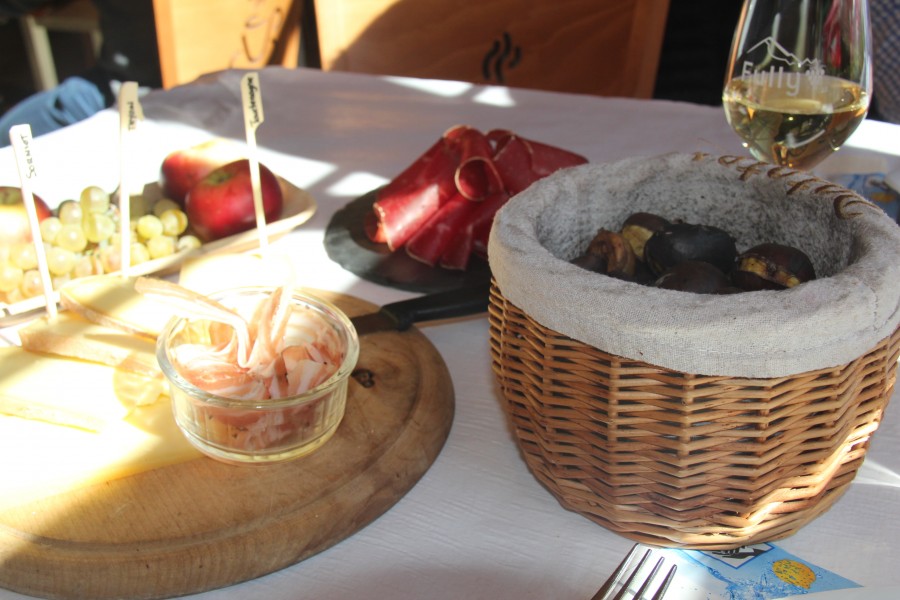
This was the perfect end to a glorious autumnal experience of a golden Valais. I’m off to carve another slice of my rye bread that made it home. I might even roast a few chestnuts too.
All images apart from feature shot, chestnut roaster and floured bread (C) Andy Mossack.
Tell me more about Autumn in Valais
For more information on Switzerland visit www.MySwitzerland.com or call the Switzerland Travel Centre on the International freephone 00800 100 200 30 or e-mail, for information info.uk@myswitzerland.com; for packages, trains and air tickets sales@stc.co.uk.
SWISS operates up to 180 weekly flights to Switzerland from London Heathrow, London City, Manchester, Birmingham, Edinburgh (seasonal during summer) and Dublin from as little as £55 one-way (Economy Light fare only includes hand luggage).
The all-inclusive fares start from £74 one-way, including all airport taxes, one piece of hold luggage and hand luggage, meals and drinks. Sports equipment and bikes can travel at attractive prices with the all-inclusive fares.
The Swiss Travel Pass offers unlimited travel on consecutive days throughout the rail, bus and boat Swiss Travel System network. This pass also covers scenic routes and local trams and buses in around 90 towns and cities. The Swiss Travel Pass also includes the Swiss Museum Pass, allowing you free entrance to 500 museums and exhibitions. Prices from £197.

